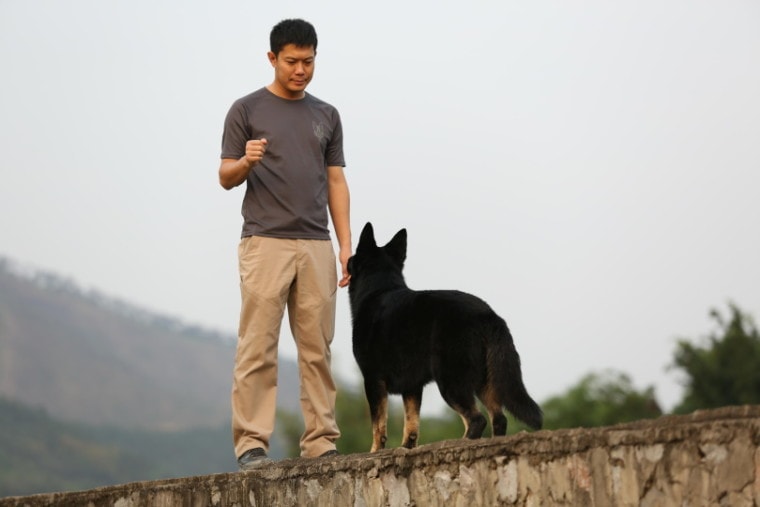
Click to Skip Ahead
Teaching your dog commands is essential on several scores. Of course, it’s fun with some tricks, such as fetching your slippers—without chewing on them! Others are imperative, like stop, stay, and come. It can mean the difference between an unfortunate event and saving a life. Think of telling your dog to stay as a reckless driver is rounding the corner.
You can start teaching your pet basic tricks and commands from day one after bringing your pet home. They are just beginning to bond with humans at this point, making them malleable and agreeable to the process. Short words like come and shake work well. While dogs are capable of understanding some things we say, it helps to keep it simple.
Importance of Training
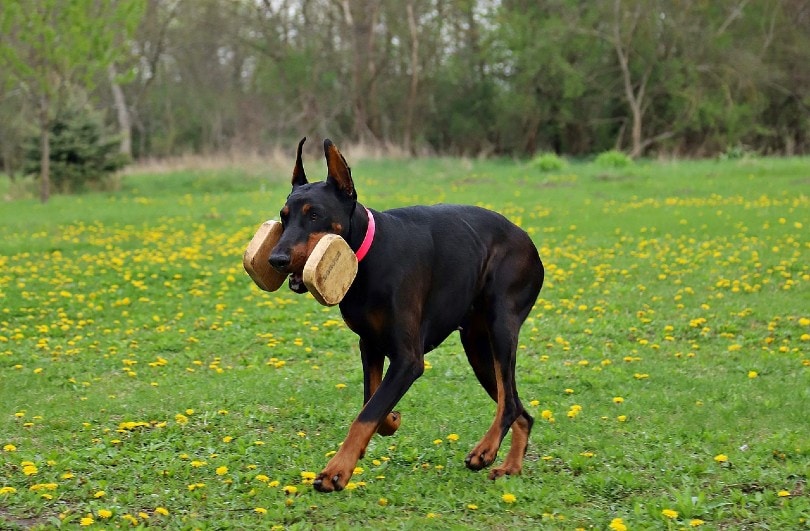
Training serves several purposes. First and foremost, it establishes communication between you and your pup. That can reinforce your bond, especially if you make it stronger with a treat. It’s helpful during vet exams, particularly since many familiar ones are the common language between dog owners.
It’s also essential for the person who happens to come across your pup. Encountering an unfamiliar dog is disconcerting. Being able to communicate with the pooch with commands that everyone knows can relieve the tension in these situations. That’s particularly true if you live in a rural area where a pet is likely to roam the surrounding land.
Ease of Training
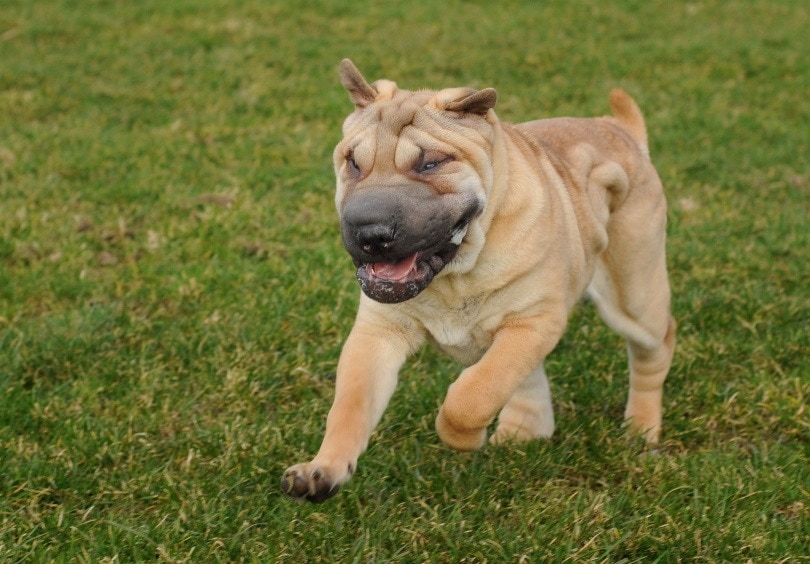
Many factors contribute to whether it’s easy or more challenging to teach a dog to come. First, there is the breed. Some are more intelligent than others, thanks to selective breeding. Think of Border Collies, German Shepherds, and other pups that typically show well in the competitive show circuit.
Other breeds are less agreeable, particularly ones that often act independently in their jobs, such as herding and hunting dogs. They usually have excellent problem-solving skills because their job depends on them. Other pets are more aloof by nature, such as Chow Chows. Some, like Siberian Huskies, are focused on quite different tasks.
There are also practical considerations, such as the pet’s age and individual characteristics, especially if you have a rescue pup. Dogs that have already been exposed to training are usually more receptive to expanding their repertoire. That’s something to consider when scrutinizing a puppy’s early upbringing with different breeders or sellers.
The essential thing is to make training a positive experience for you and your dog. Those associations will make your job easier and help cement these commands in your pup’s memory. If your pet doesn’t follow through correctly, refrain from punishing them. Discipline to control unwanted behavior is one thing; your dog should understand no but never be punished. Training is another thing altogether.
The 9 Tips to Train a Dog to Come:
The supplies you’ll need are a leash, preferably a retractable one, and some treats. You’ll find them a more powerful motivator if it’s something different than your pup’s usual treats. It’ll make a stronger impression on your pet to help the lessons stick better.
1. Start practicing in a small indoor room.
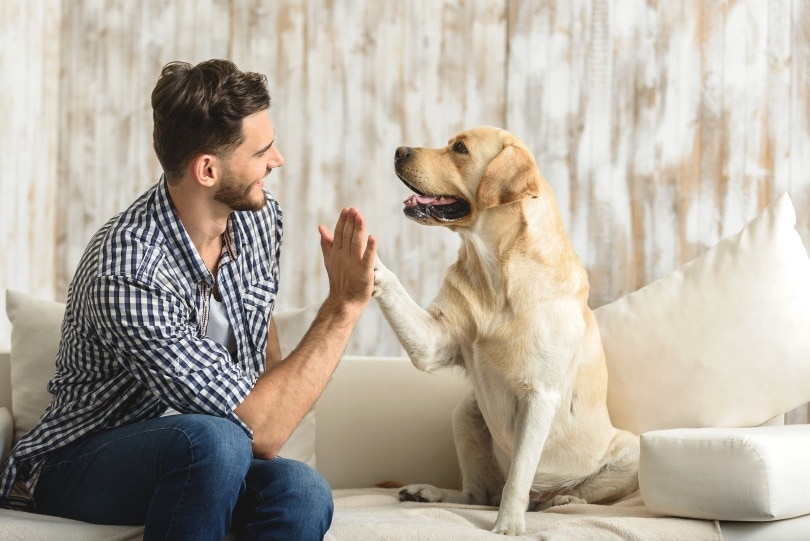
It’s best to start your training indoors. There are fewer distractions so that both of you can focus on the task at hand. Think of it as beginning with training wheels. We suggest practicing with just you and your dog in the room.
2. Face your pet and slowly back away as you say come.
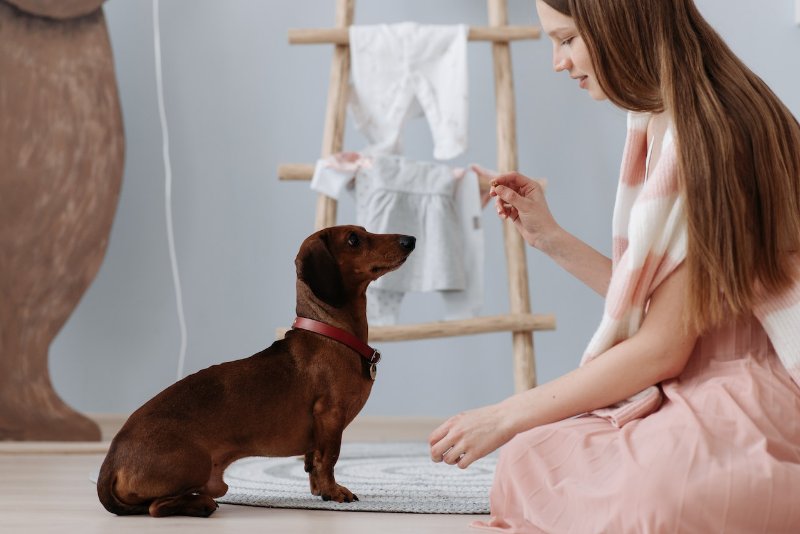
The point of this approach is to keep things calm so that it isn’t playtime. We suggest saying the command only once and not using your pet’s name. The reason for the latter is that the chances are you use it for other things that have nothing to do with what you’re teaching your pup now. The goal is to teach your pooch this command.
3. Make sure your dog reaches you all the way.

Let’s face it. Your pet may seem confused at first until the penny drops, and they figure out what’s expected. If your pup stalls halfway to you, take another few steps back as you repeat the command. You can use a hand signal, and once the dog makes a move toward you, use the clicker as a reinforcement.
4. Reinforce the goal.
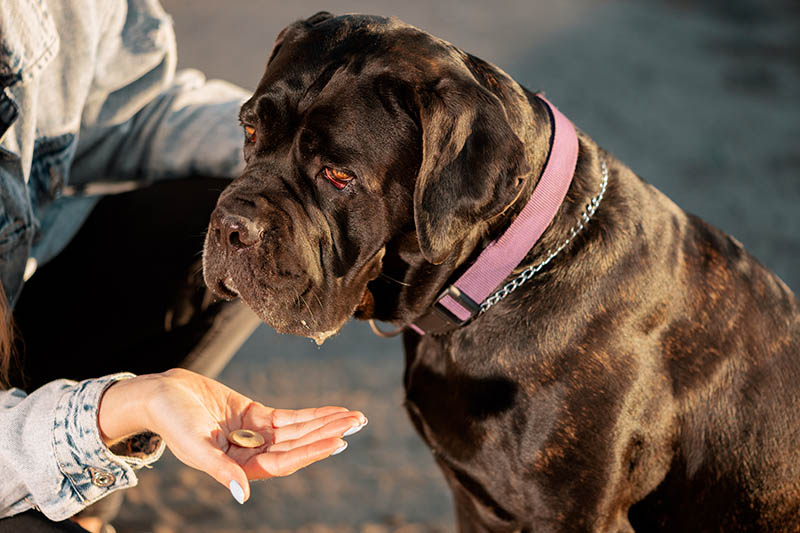
You need to do two things if your pet has made it all the way to you. First, take hold of the collar to reinforce the point of the command. That teaches your pup to learn that come means walking to you and standing by your side. Second, it’s treat time! Give your dog their well-deserved reward, along with some lavish praise for a job well achieved.
5. Rinse and repeat.

Practice just a few times the first time with the lesson. After all, only 10% of your pup’s diet should come from treats. After a while, it may just seem like a game to your pet, anyway. The key is to repeat it frequently until your dog gets it and can graduate to the outdoors. In the meantime, you can continue to practice with other people in the room.
6. Take it outdoors.

Ideally, you have a fenced-in yard. If not, the retractable leash we mentioned earlier will come in handy. We understand that it’s a distraction in itself. Your pet may assume it’s time for their daily walk instead of training. The process is the same that you did indoors, only your dog is on their leash for the safety factor. Don’t forget the treat and praise! Exposing your pup to new situations will also make them less fearful.
7. Incorporate training into your daily walks.

When it seems like your pup is getting it, it’s an excellent time to try it in different scenarios, such as you’d encounter on a walk in the neighborhood. It’ll also improve your pet’s concentration to repeat the command with distractions around the both of you. However, pick your moments carefully. Sometimes, greeting your pup’s canine buddies trumps training.
8. Increase the distance between you and your pet.
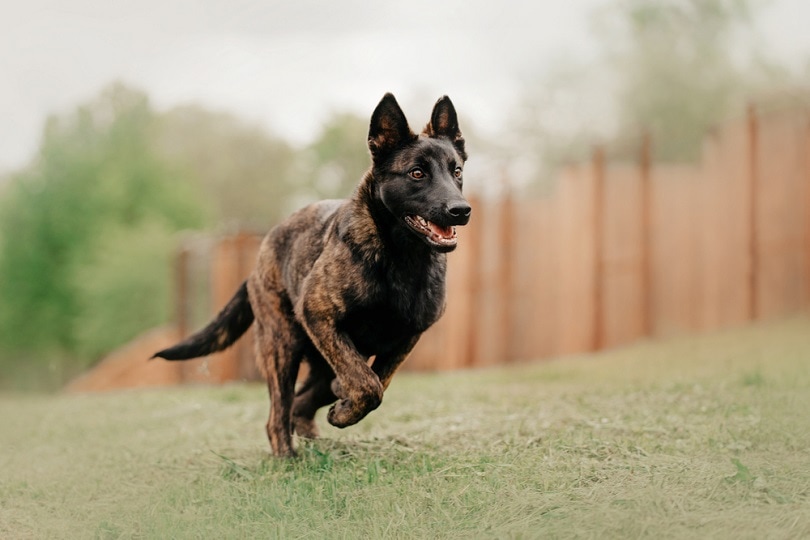
Increasing the distance takes the command and training to the next level. However, it’s a vital step in the process. Think of those times when you’ll need your dog to respond without hesitation. You can continue the lessons indoors and outdoors to reinforce them. That makes the retractable leash handy again.
9. Training never stops.
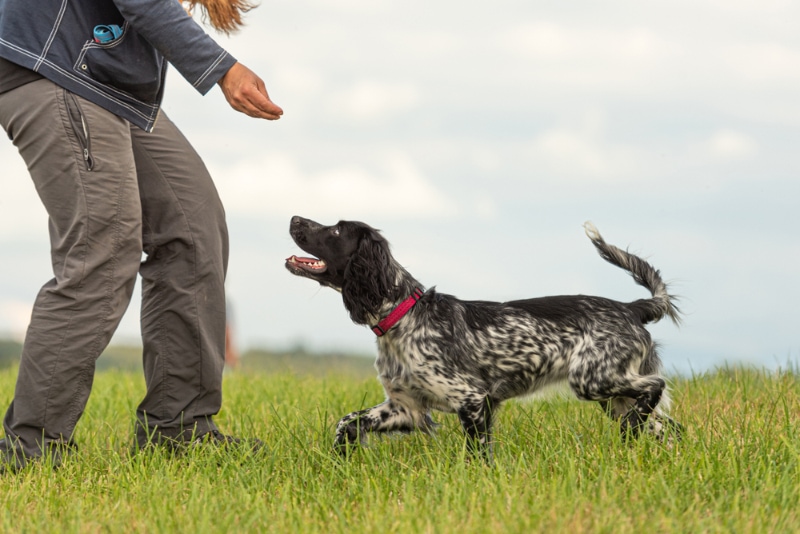
No matter how intelligent your pet is, it’s essential to keep repeating their lessons regularly. Reserving treats just for training is an excellent way to ensure that your pup doesn’t forget the training. It’s also a time to bond with your dog. There can’t be too much of that time!
Final Thoughts
Teaching your dog commands isn’t a difficult process. Just remember that your pup is young. Training is a whole new world for your pet that goes beyond playing fetch or games of tug-of-war. Most likely, your pooch won’t get it the first time. They may do fine a couple of times before it feels like you’re starting at step one again. It goes with the territory.
Training is a vital part of pet ownership. It helps curb unwanted behavior and encourages your pup to do what you want, especially commands like stay and come. Your attitude and dedication to the task will decide how successful you are. Most dogs are eager to please their human companions. All it takes is patience and persistence to master these tasks.
- See Also: How Do Dogs Communicate With Each Other?
Featured Image Credit: Piqsels









